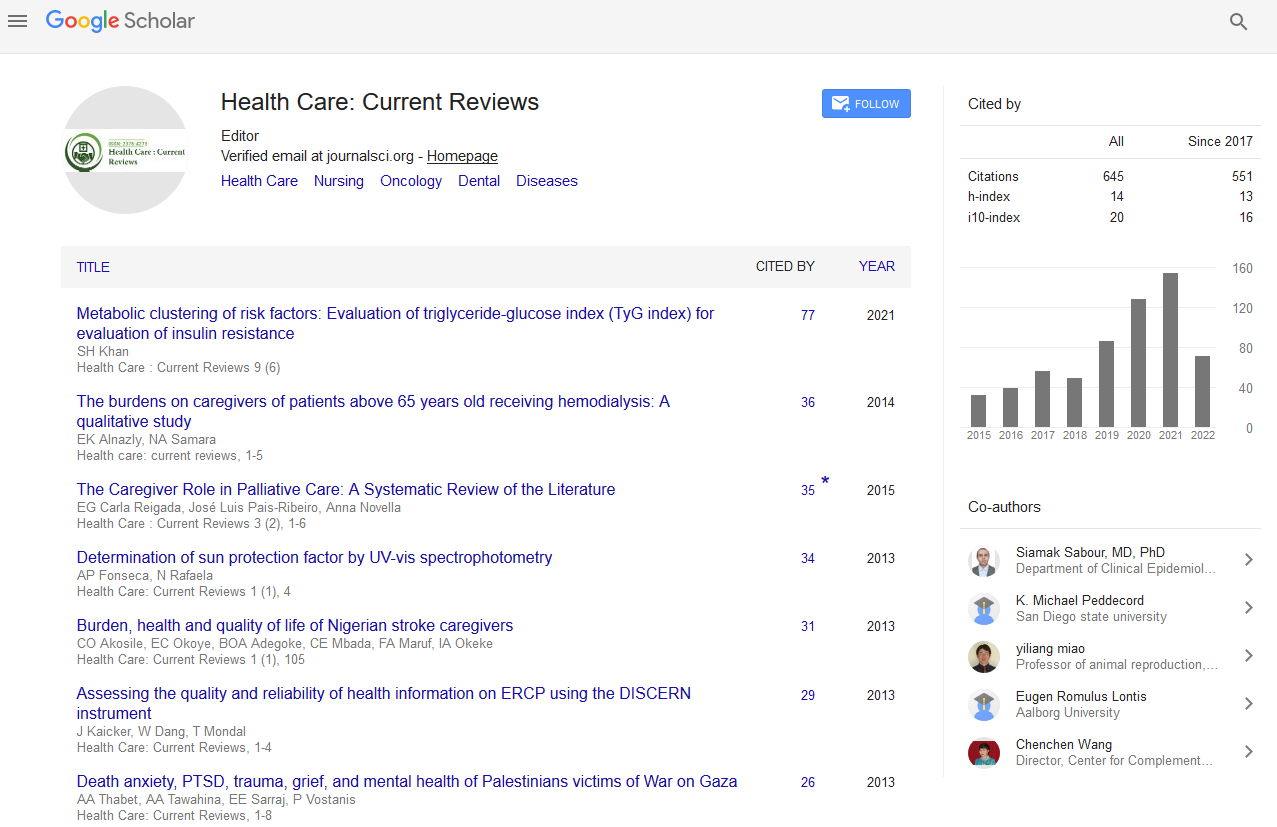PMC/PubMed Indexed Articles
Indexed In
- Open J Gate
- Academic Keys
- RefSeek
- Hamdard University
- EBSCO A-Z
- Publons
- Geneva Foundation for Medical Education and Research
- Google Scholar
Useful Links
Share This Page
Journal Flyer

Open Access Journals
- Agri and Aquaculture
- Biochemistry
- Bioinformatics & Systems Biology
- Business & Management
- Chemistry
- Clinical Sciences
- Engineering
- Food & Nutrition
- General Science
- Genetics & Molecular Biology
- Immunology & Microbiology
- Medical Sciences
- Neuroscience & Psychology
- Nursing & Health Care
- Pharmaceutical Sciences
Propionic acid production in cheese whey fermentation by a mixed culture of Propionibacterium freundenreichii subsp ATCC 6207 and Lactobacillus paracasei
Joint Event on International Conference on Applied Microbiology and Microbial Biotechnology & International Conference on Microbiome R&D and Biostimulants & 3rd International Conference on Internal Medicine & Hospital Medicine
October 15-16, 2018 Ottawa, Canada
Jose Guilherme Lembi Ferreira Alves
Federal University of Lavras, Brazil
Posters & Accepted Abstracts: Health Care Current Reviews
Abstract:
Propionic acid is used as an animal nutrition additive, food preservative and in the manufacture of cellulose-based plastics, herbicides, and perfumes. Propionic acid production was investigated using concentrated whey from fresh cheese as the source of carbon for P. freundenreichii subsp ATCC 6207 and L. paracasei mixed culture. A rotational central composite design (RCCD) was carried out with 17 essays, with 3 independent variables (concentration of L. paracasei inoculum, lactose and calcium carbonate concentrations) and as response variables propionic acid (PA), acetic acid and lactic acid, concentrations, determined by High-Performance Liquid Chromatography, in addition to lactose consumption, cell counts, total acidity and pH. The concentrated whey media were sterilized and inoculated with 10% vv-1 P. freundenreichii. The fermentations were conducted in erlenmeyers in an incubator at 30�C without stirring. In the best essay PA production was 23.27g L-1, with sugar consumption of 42.17g.L-1 after 120h. The cell growth in this assay was 3 log cycles (from 106 to 109 CFU mL-1). The three treatments with the highest titratable acidity varied, on average, from 0.62 to 16.09g L-1 during the fermentation, while the mean pH variation of the media was from 7.12 to 4.54. It was found that the highest yields of PA occurred with values below 40g L-1 of lactose and above 25g L-1 of calcium carbonate in the medium. The concentration of Lactobacillus inoculum had no influence on the process and the addition of carbonate favored the production of propionic acid.
Biography :
Jose Guilherme Lembi F. Alves is bachelor's at Chemical Engineering from Federal University of Lavras Minas Gerais (1992) in Belo Horizonte//Brazil, master's in Food Engineering at Estadual University of Campinas (1996) and Doctor in Food Engineering at Estadual University of Campinas (2003), in Campinas/Brazil. He is currently Professor Associate II at Federal University of Lavras (UFLA). He has experience in Food Engineering, acting on the following subjects: industrial fermentations; optimization of fermentative processes; purification of biological products using Liquid-liquid extraction. He has published 20 papers in reputed journals and has been serving as an editorial board member of reputed journals.
E-mail: jlembi@dca.ufla.br


